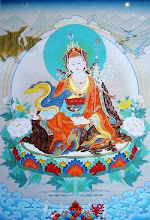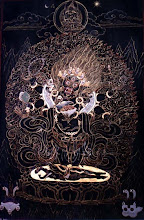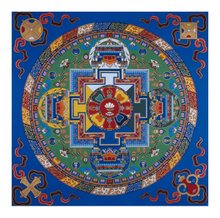Yesterday we ventured out to Kurume, a city only 30 minutes by train from Fukuoka. Perhaps because it’s so close, or perhaps because we never had any reason, until yesterday we had never been.
We have Rui to thank for making such a visit possible. She invited us for dinner at one of her favorite Italian restaurants, and since we were headed out that way, I thought we’d go a little early and see one of Kurume’s tourist attractions, the giant statue of Kanon, the Japanese version of Avalokiteshvara, the Buddhist god (or goddess) or mercy.
The 62 meter statue stands on a hill just off one of the main roads running out of Kurume and is part of a larger complex that includes a traditional Japanese Buddhist temple (foreground left) and a recreation of the temple at Bodhgaya (middleground), the town in north India where Siddartha Gautama became the Buddha, the awakened one.
From afar the statue looks a bit odd. You don’t see such things on the Japanese landscape very often. The Statue of Liberty, yes. It adorns the tops of hotels and pachinko parlors all across Japan. But Buddhas, Virgin Marys or crucifixes, no.
Once you walk up the hill (and past the kindergarten with the cool tire sculptures of dinosaurs), you find that the site is about as tacky as the Statue of Liberty on the love hotel.


Actually, the Kanon itself is perhaps the least tacky bit in the whole complex, which seems designed primarily for collecting money from sightseers, with entrance tickets costing 500yen. That allows you to climb up the 278 steps to the shoulders of the Kanon for some nice views of the surrounding countryside.



It also gets you into the tour of hell, a Buddhist haunted house that shows what’s in store for those who continue to accrue negative karma. This particular hell is the best one I’ve seen thus far, an animated diorama with spooky lighting and some nice sound effects.

You can also enter the Bodhgaya Temple, which houses some inelegant paintings from Sri Lanka illustrating various stages of the Buddha’s life, in addition to a malformed Buddha statue. What’s cool, though, is that this temple functions primarily as a tomb; spots are still available to store your urn.

Altogether, the Naritasan Temple was more awful than awe-inspiring. Still, it was worth a visit, especially for the tour of hell and a chance to spend time with friends.


Oh, and dinner was great, too. Especially since it was Rui’s treat. Thanks, Rui! We’re looking forward to our next visit to Kurume.



























0 comments:
Post a Comment